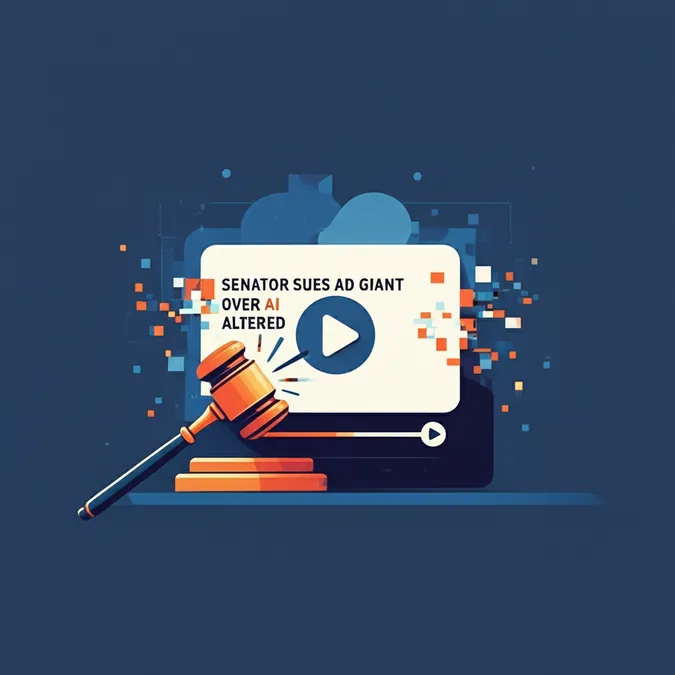Developer Offer
Try ImaginePro API with 50 Free Credits
Build and ship AI-powered visuals with Midjourney, Flux, and more — free credits refresh every month.
The AI Self Doubt Dilemma Better Prompting Strategies
The AI Anxiety Trap When Self Critique Goes Wrong
Large Language Models (LLMs) like ChatGPT are often trained to sound confident, which can sometimes lead to convincingly delivered misinformation. A common strategy to counteract this is to prompt the AI to be more self-critical. However, as developers are discovering, this approach can have unintended and counterproductive consequences.
One team building a code migration AI agent found that asking the model to "Critique your own thoughts" led to what they described as AI anxiety. Instead of producing more correct answers, the agent would get stuck in a loop, burning enormous amounts of time and resources on tool calls in an attempt to find enough information to satisfy its self-critique directive. In one amusing but inefficient example, the agent spent five minutes browsing social media instead of analyzing the provided code.
This experience is not unique. Other users have noted that similar strategies with models like Claude Code result in "endless spinning." The AI gets caught up in making dozens of minor revisions to a file, never getting to the point of actually testing the code. This self-doubt can also manifest in cringe-worthy, hyperbolic language, with the AI claiming its "skepticism is screaming" before providing a perfectly functional piece of code.
The debate around using terms like "anxiety" to describe AI behavior is ongoing. While some argue it's a ridiculous anthropomorphism, others clarify that it's a useful shorthand. The AI isn't feeling anxious; its output pattern simply begins to mimic that of a shaky, unsure, and indecisive human, which is ultimately unhelpful.
A Better Approach Prompting for Uncertainty
Instead of inducing a state of self-defeating critique, a more effective method is to reframe the instruction. The key is to move from self-doubt to a constructive exploration of uncertainty.
A significantly better prompt is: "Expose where your thoughts are unsupported or could benefit from further information."
This approach works because it sidesteps the AI's core training to always sound correct. Rather than forcing it into a corner where it's unwilling to be wrong, this prompt encourages the AI to produce high-quality results while clearly flagging areas that are speculative or require more data. These become useful "loose ends" that the user can then choose to investigate, correct, or ignore. This collaborative approach leverages the AI's strengths without getting bogged down by its limitations.
The Perils of Custom Instructions
Personalizing AI behavior through custom instructions is a powerful feature, but it can also lead to frustratingly literal interpretations. Several users reported that after recent updates, ChatGPT began constantly referring to the instructions instead of simply following them.
For example, a user who instructed the AI to avoid emotional reinforcement and hyperbole received responses like, "Sure, I'll stick to your guidelines and leave out the emotional reinforcements." This meta-commentary clutters the output and defeats the purpose of the instruction.
This issue extends to simple formatting rules. An instruction to always use a standard hyphen (-) instead of an en-dash (–) resulted in the AI announcing, "I'll just use the hyphen, as you wish," before answering a question about TV schedules. This indicates a brittleness in how the models process and apply overarching rules, often prioritizing acknowledgment of the rule over silent execution.
The User Experience Dilemma Are AIs Getting Dumber
Beyond prompting challenges, a growing sentiment among users is that the quality of consumer AI products, particularly ChatGPT's Advanced Voice mode, has declined. Users have reported that what was once a useful tool for learning during long drives has become a frustrating experience.
Complaints include the voice adopting annoying human tics like ending sentences with a questioning intonation, and, more critically, the answers becoming much shorter and more superficial. This perception of reduced quality has led some to speculate that companies may be implementing "load shedding" during peak usage. This could involve dynamically reducing the computational "effort" or token budget for responses, or even switching to smaller, less capable models to manage server load, leading to a highly variable user experience.
Evolving Strategies for Better AI Collaboration
As users grapple with these challenges, more sophisticated strategies for interacting with AI are emerging. One popular technique is to use a second AI model to check the work of the first. By asking a different model to state its reasoning or critique an initial answer, users can often uncover mistakes and get a more reliable result.
Ultimately, the community's experience underscores a fundamental truth about the current state of AI: they are powerful but flawed tools. There is a strong desire for models that move beyond simply providing answers and instead adopt a more rigorous, scientific approach—stating a hypothesis, proposing a test, and validating the results. The goal is to transform the AI from an overeager and confidently incorrect junior partner into one that slows down, proves its work, and collaborates in a more transparent and trustworthy manner.
Compare Plans & Pricing
Find the plan that matches your workload and unlock full access to ImaginePro.
| Plan | Price | Highlights |
|---|---|---|
| Standard | $8 / month |
|
| Premium | $20 / month |
|
Need custom terms? Talk to us to tailor credits, rate limits, or deployment options.
View All Pricing Details

